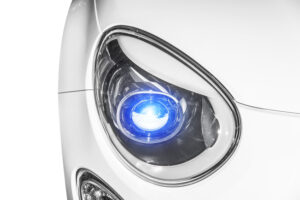Basic Car Maintenance: 101
 You rely on your car to get you around town, but there’s no denying that owning a vehicle can be difficult at times, especially when it comes to vehicle maintenance. It can be confusing to know what to replace, how to replace, and when to replace different parts of your vehicle, so here is a quick and easy guide to everything you need to know about car maintenance.
You rely on your car to get you around town, but there’s no denying that owning a vehicle can be difficult at times, especially when it comes to vehicle maintenance. It can be confusing to know what to replace, how to replace, and when to replace different parts of your vehicle, so here is a quick and easy guide to everything you need to know about car maintenance.
Tires
Without the proper tires, your safety will be compromised. Quality tires are important, especially in wet and dark conditions, and it is crucial to install the right tires for your vehicle. Did you know that more than 40% of all fatal car accidents occur at night? Here are some quick tips for proper tire care.
- You should rotate your tires every 5,000 to 7,000 miles.
- Always put new tires on the back axle, as this will help you keep control on wet roads.
- Check the tire pressure regularly, and keep it at your manufacturer’s recommendation to avoid flat tires.
- Check tire tread depth: if you insert a penny into the treads and you can still see Lincoln’s head, then it is time to shop for new tires.
Brakes
Your brakes are one of the most important features on your vehicle — for obvious reasons — and there’s nothing scarier than trying to slow or stop your car and being met with unresponsive brakes. Make sure yours are in correct working condition by following these tips.
- Always check that there is enough brake fluid. If the fluid is a milky white color, then change it right away, as that means water has contaminated the area.
- Bleed your brake lines to get all of the air out of them.
- Regularly inspe
ct the brake pads, and if you cannot see them after you remove the tires, replace them right away.
Headlights
Your car’s headlights are important for visibility during both day and night.
- One of the most effective ways to make your vehicle safer during the day is to install daytime running lights. Studies have shown that installing these can reduce daytime crashes by 11%.
- Make sure to install only high quality low beams to see during the night. They should allow you to see up to 160 feet away, while good quality high beams should be able to illuminate 500 feet in front of you. Remember high-beam etiquette, however: Only use them when there are no cars approaching in the opposite lane.
- Invest in headlight restoration if your lights get foggy or blurred. It is easy to DIY headlight restoration with the help of a headlight restore kit. These headlight cleaning kits are easy to follow and will ensure you can see and will be seen on the road!
Follow these easy tips and you can rest assured you will be safe and sound driving on the roads!
